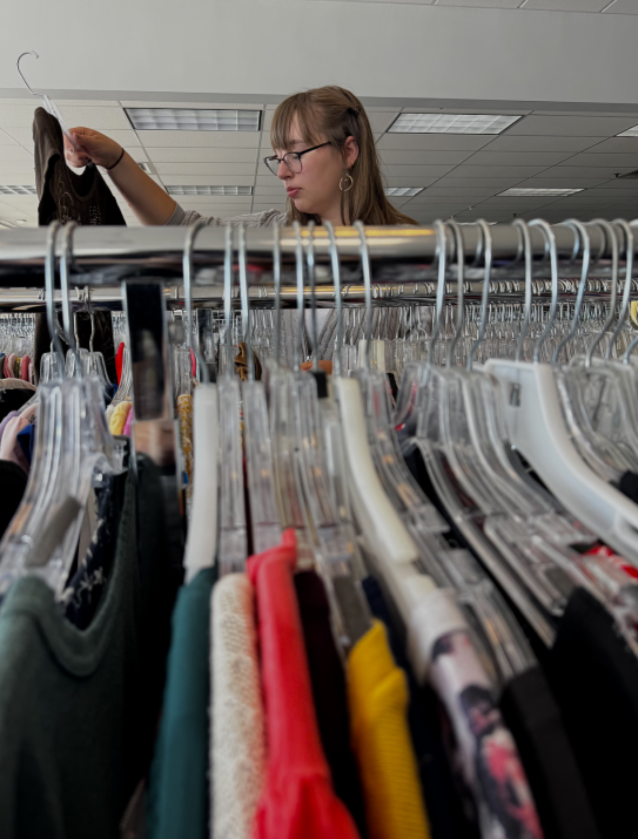Gen Z Fashion: Intentionally Undefinable

By Delaney Church
Emma Smythe, 22, rifles through the endless racks of clothing at the local Cincinnati Goodwill, plucking up a neon graphic tee and examining it with a smile. Distinctly 80s-esque, the pink and purple swirls and patterns will complement the chunky white sneakers she has envisioned for tomorrow’s outfit. On the same rack, Emma reaches for a black and white polka dot halter top that teems with the nostalgia of the 1950s–perfect for a weekend outing with friends and red heels alike.
Though the two pieces embody different fashion trends and channel aesthetics from decades come and gone, they are exactly Emma’s personal style. As many Gen Zers will proudly testify, personal style is not limited to one aesthetic, trend or look. “I don’t have just one style,” Emma says as she gestures to her overflowing cart containing a variety of colors, patterns and cuts. “Sometimes I like to wear chunky platform boots and mini skirts–more 90s-inspired. Other times I love a good Y2K look with low-rise jeans and platform flip flops,” she laughs. “That’s the fun of it!”
While specific trends and looks can be attributed to past decades in American history that correspond with previous generations, Gen Z offers a new take on fashion. Fashion for this generation is seen as an opportunity to showcase each young adult’s individuality and desire to experiment. Splashed across Instagram pages and popularized on TikTok are a variety of different outfits and aesthetics, each piece and style paying homage to a revived trend from decades past. So what is Gen Z’s personal style? Gen Z’s personal style is distinctly and intentionally undefinable; a melting pot of recycled trends and aesthetics that create an entirely fresh and exciting new era of fashion.
What better place to catch Gen Z showcasing their tailored fashion taste than OTR on a warm Friday night? One Gen Zer waltzes down the cobbled street in a striking pair of white go-go boots and a pastel knit-dress, while another dons a band-tee, a chain-link belt and baggy blue jeans. “I like more of the bell bottoms, floral type of thing,” Amiyah Green, 21, shares. “It depends on the day, though,” she chuckles. “If you caught me last night instead, I’d be channeling more of that 90s, whimsigoth style.” Jon Allen, 24, says he owes his 80s-inspired outfit to social media. “I love a good baggy jean and band tee combo. Apps like TikTok have really helped inspire me to try new clothes and tap into different styles.” Both fashion aficionados insist that sticking to one style is “boring” and that clothes are “an extension of the person who is wearing them.”
What does this fusion of fashion and style say about Gen Z? This theme of individuality and Gen Z’s desire to be regarded as unique is not just limited to fashion–it extends to social media, politics, identity, gender expression and other sociocultural norms. Gen Z utilizes fashion as a second voice that speaks for them in a visual way that words can’t always accomplish. “I feel like I’m communicating about important parts of my identity, personality and values through my clothes and style,” Emma reveals. “I think we as Gen Z want to emphasize that we are allowed to be ourselves and take up space, no matter how that may look, and clothing does that for us”.
Gen Z may not be a generation of never-seen-before trendsetters, but in a way, they are. Rather than opting for clothes that appeal to a decade-specific aesthetic, these young fashionistas have learned the art of combining, tailoring and blending a variety of aesthetics and trends, which one could argue creates a trend in of itself. From one Gen Zer to the next, no two outfits will look the exact same or share the same voice, and one thing is for certain: Gen Z intends to keep it that way. Individuality is the currency of fashion in 2025, and Gen Z is keeping it in business.